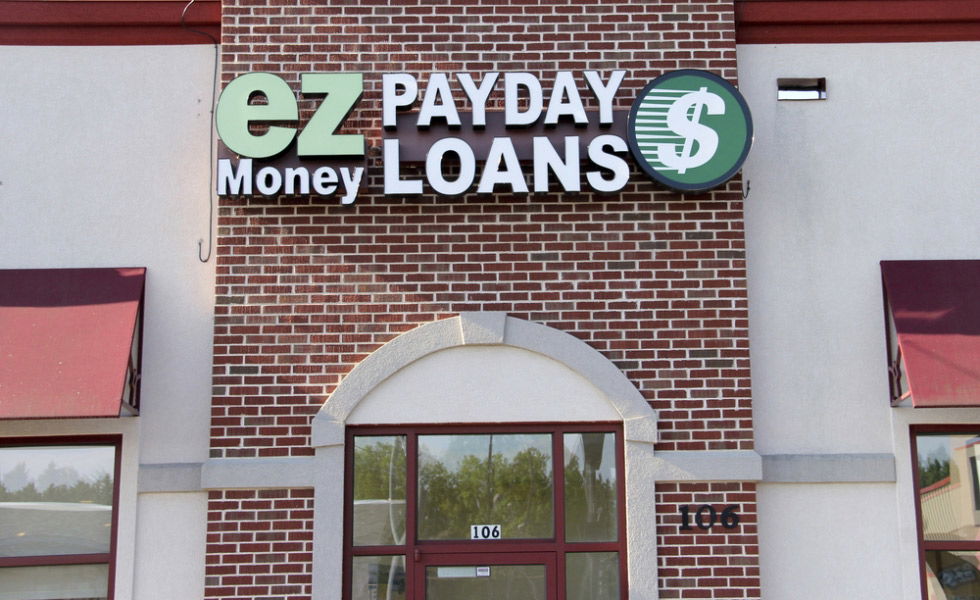Struggling with the high costs of payday loans? A payday alternative loan (PAL) might be the solution you’re seeking. Offered by federal credit unions, PALs are designed to provide a cost-effective borrowing option with capped fees and interest rates that starkly contrast the predatory nature of traditional payday loans.

In this article, we’ll explore the essentials of “what is a payday alternative loan (PAL)”, how it differs from other quick-loan options, and why it might be a smarter choice for your financial health.
Key Takeaways
- Payday alternative loans (PALs) are affordable, credit-building loans from federal credit unions, designed with capped interest rates and fees to prevent debt cycles, unlike traditional payday loans.
- PALs require credit union membership and proof of income, with more relaxed credit score considerations, making them accessible to a broader range of borrowers compared to other credit options.
- PALs offer structured repayment plans, with no rollovers allowed, promoting responsible borrowing and providing a safer alternative to high-cost payday loans.
Payday Alternative Loans (PALs): An Overview
Payday alternative loans (PALs), exclusively offered by certain federal credit unions, provide an affordable safety net for borrowers. Unlike traditional payday loans, PALs aim to assist borrowers in building or repairing their credit records, facilitating a smoother transition to mainstream financial products.
The design of these loans aims to counteract the high-interest rates and short-term debt cycles typically linked with payday loans. The National Credit Union Administration (NCUA) has set specific regulations for these unsecured, small loans, ensuring their safety and affordability.
The Structure of PALs
There are two types of payday alternative loans: PAL I and payday alternative loan pal (PAL) II, both designed as alternatives to a typical payday loan. PAL I loans range from $200 to $1,000, with loan terms spanning from 1 to 6 months. On the other hand, the pals ii loan offers up to $2,000 with no minimum amount, and repayment terms extending from one to 12 months.
The required duration of membership for these loans also differs. While PAL I loans require borrowers to be credit union members for at least one month, PAL II loans are more accessible, with no waiting period for new members.
Cost Advantages Over Traditional Payday Loans
PALs notably outpace traditional payday loans when it comes to cost advantages. With a maximum annual percentage rate (APR) of 28%, PALs are a far cry from the 300% to 500% APRs that typical payday loans can carry.
In addition to lower APRs, the benefits of PALs over payday loans include:
- The application fee for PALs is capped at $20
- PALs often have more predictable fees compared to traditional payday loans
- Choosing PALs can help borrowers avoid high costs that contribute to debt cycles, potentially resulting in sizable savings.
Borrowing and Repayment Guidelines
PALs’ borrowing and repayment guidelines are structured to promote responsible borrowing. Members can receive a maximum of three PALs within a six-month period, ensuring they don’t overextend themselves.
Moreover, the PAL II program prohibits loan rollovers, and loans must be fully amortized. This prevents borrowers from continually renewing their loans and incurring additional fees, a common practice with many payday loan products that often leads to long-term debt cycles.
Eligibility Criteria for Obtaining a PAL
Individuals must be in good standing with the credit union and pass a credit check to qualify for a PAL. This requirement is key in ensuring that the credit union can trust the borrower to repay the loan.
Applicants for a PAL must meet the following requirements:
- Have a direct deposit set up with their credit union
- Provide proof of income, such as pay stubs
- Credit unions prioritize a borrower’s income over their credit score when deciding on PAL loan applications, which is beneficial for applicants with less favorable credit histories.
Membership and Account Requirements
To obtain a PAL, one must be a member of a credit union. But the duration of membership required differs between PAL I and PAL II. While PAL I requires at least one month of membership, PAL II loans are available as soon as you become a member, providing instant financial relief when needed.
Income Verification Process
In the PAL application process, borrowers are required to furnish proof of income. This could be a recent pay stub or bank statement. Proof of stable income is an essential requirement during the PAL underwriting process to establish a borrower’s eligibility.
Credit unions assess whether the credit union member is in good standing and verify if the borrower earns sufficient income to support monthly loan repayments, taking into account their credit scores. This process is different from traditional payday loans, making PALs more accessible to a broader range of borrowers.
Comparing PALs With Other Borrowing Options
Consumers have more borrowing options than just payday alternative loans. Personal loans and credit cards also offer short-term financial solutions. However, the accessibility of these options can depend significantly on a borrower’s credit status and their need for an affordable, short-term loan solution.
That said, keep in mind that PALs are structured to be safer and more affordable than traditional payday loans. Even for borrowers with good credit, a 0% intro APR credit card might sound appealing, but PALs provide a more accessible solution for a wider range of borrowers, including those with less-than-perfect credit.
PALs vs. Personal Loans
In comparing PALs and personal loans, keep in mind that personal loans:
- Can offer up to $100,000
- Have repayment terms ranging from nine to over 60 months
- Can be either secured by collateral or unsecured
- Are generally associated with longer repayment periods and lower interest rates when compared to payday loans.
However, while both PALs and personal loans are designed to offer financial assistance, a personal loan provided by banks and online lenders typically feature a larger range of loan amounts and longer repayment terms. This makes personal loans a more suitable choice for borrowers seeking larger amounts and extended repayment schedules.
PALs vs. Credit Cards
Between PALs and credit cards, PALs may provide lower interest rates, which is worth considering. This makes them potentially more manageable for financial emergencies compared to credit cards.
For individuals without access to traditional credit cards, payday alternative loans may offer a more attainable option due to their lower credit requirements. This makes PALs a more inclusive financial solution, catering to a broader demographic.
The Pitfalls of Typical Payday Loans
Despite appearing as a quick solution for pressing financial needs, high cost payday loans carry several drawbacks. Payday loans often feature interest rates that can soar to 400% or more, significantly increasing the cost of borrowing.
Moreover, the short repayment period of payday loans frequently necessitates borrowers to roll over loans into new ones, exacerbating their financial burden. This often results in borrowers paying much more than the original loan amount, causing significant damage to their financial health.
The high costs and debt cycle associated with payday loans make PALs a much safer alternative.
How to Apply for a Payday Alternative Loan
The process to apply for a payday alternative loan is uncomplicated. Start by identifying federal credit unions that offer PALs. You can do this by visiting their websites or making direct inquiries.
Once you’ve determined a credit union that offers PALs, confirm their availability and follow their application process.
Finding a Credit Union That Offers PALs
To find credit unions that offer PALs, prospective borrowers can either visit their websites or make direct phone inquiries. It’s important to ensure that you are eligible for membership, as this can be based on factors like geographic location, employer, religious affiliations, military affiliation, or membership in certain groups.
Joining a credit union that offers PALs is typically easy and affordable, with the usual one-time membership fee being as low as $5. So, it’s worth exploring this option if you’re seeking a cost-effective alternative to payday loans.
Application and Approval Process
To apply for a PAL, one needs to submit an application online or in person, provide personal information, and present proof of income. The maximum application fee for a PAL is $20, making it a more affordable option compared to payday loans, whose fees can escalate quickly with rollovers.
There’s typically a $25 application fee for PALs that is included in the loan repayment. This minor upfront investment can result in significant savings in the long run, especially when compared to the high costs associated with payday loans.
Understanding the Waiting Period
Before applying for a PAL, it’s important to understand the waiting period. For PAL I, borrowers must be members of the credit union for at least one month before they are eligible. However, PAL II loans have no such waiting period, which can be particularly beneficial in emergencies.
There are also limitations on the number of PALs a borrower can have at a time. A borrower is limited to receiving only one PAL at a time and is restricted from obtaining more than three PALs within a six-month period. This prevents the cycle of debt that is typical with many payday loan products.
Financial Strategies Involving PALs
Beyond serving as a lifeline for those in need of immediate cash, payday alternative loans (PALs) have other uses too. They can also be strategically used in a variety of financial strategies, from consolidating high-interest payday loans to serving as a safety net for unexpected expenses.
Debt Consolidation With PALs
Debt consolidation is one strategic use of PALs. With a PAL, borrowers can:
- Combine multiple debts from payday loans into a unified loan structure
- Benefit from more favorable terms compared to individual high-interest loans
- Potentially make repayments more manageable.
Moreover, PALs offer a lower annual percentage rate (APR), reducing the overall cost of the borrowed funds. This, combined with extended repayment periods, allows borrowers to spread out their payments over time, further easing their financial burden.
Emergency Use Cases for PALs
PALs can serve as a financial safety net during emergencies, such as unforeseen medical costs or car repairs. With considerably lower fees than traditional payday loans, PALs provide a viable solution in emergencies.
Furthermore, federal credit unions offering PALs may also provide additional services such as free financial counseling through their federal credit union. This additional support can prove invaluable during times of crisis, making PALs an even more attractive option for borrowers.
Avoiding the High-Cost Loan Trap
PALs are structured to shield borrowers from the debt cycle typically associated with high-cost loans. Unlike payday loans, which often lead to longer-term debt cycles, PALs carry a cap on the annual percentage rate (APR) at 28%, which is significantly less than the triple-digit APRs often charged by payday lenders.
Additionally, payday alternative loans offer the following benefits:
- Application fees are limited by regulation to not exceed an affordable flat rate, avoiding the high upfront costs often associated with payday loans.
- PALs provide longer repayment periods, which contribute significantly to the stabilization of a borrower’s financial situation.
- PALs effectively help borrowers avoid the high-cost loan trap.
Summary
Payday alternative loans (PALs) offer a safer, more affordable alternative to traditional payday loans. With lower APRs, capped application fees, and longer repayment periods, PALs are designed to help borrowers build or repair their credit, avoid high-cost loan traps, and manage their finances more effectively. Whether you’re facing an emergency, need to consolidate high-interest debts, or simply want a safe, short-term loan option, PALs are a solution worth considering.
Frequently Asked Questions
What happens if I can’t repay a PAL on time?
If you’re unable to repay a PAL as scheduled, it’s important to communicate with your credit union immediately. They may offer options such as loan extensions or financial counseling to help you manage the situation without falling into a debt cycle.
Are there any hidden fees with PALs?
No, PALs do not have hidden fees. The National Credit Union Administration (NCUA) regulates PALs to ensure fees are capped, including a maximum application fee of $20.
Can PALs improve my credit score?
Yes, PALs can potentially improve your credit score. Since credit unions report repayments to credit bureaus, consistent, on-time payments can help build or repair credit.
Is there a limit to how many PALs I can take out in a year?
While you can only have one PAL at a time, you are limited to receiving no more than three PALs within a six-month period to prevent over-borrowing and potential debt cycles.
Do I need collateral for a PAL?
No, PALs are unsecured loans, which means they do not require collateral. This makes them accessible to borrowers who may not have assets to use as collateral.



